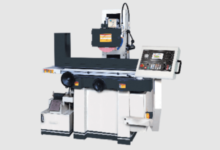Navigating the Tides: Optimising Logistics Flexibility for Unpredictable Demand

In this changing business world, predictability is a luxury. We’ve all seen how quickly market demands can shift, supply chains can face unexpected disruptions, and consumer behaviour can evolve in the blink of an eye. For businesses, this unpredictability often translates into a significant challenge: how do you manage your logistics when you can’t reliably forecast what’s coming next?
The answer lies in cultivating logistics flexibility. It’s about building a supply chain that can bend without breaking, adapt without costly overhauls, and respond quickly to both sudden surges and unexpected lulls in demand. This isn’t just about having backup plans; it’s about embedding adaptability into the very core of your operations.
The Shifting Landscape: Why Predictable Models No Longer Suffice
For a long time, logistics planning relied heavily on historical data and predictable seasonal patterns. Businesses would meticulously forecast demand, secure long-term contracts for warehousing and transportation, and build their networks around these projections. This worked well in a more stable environment.
However, several factors have reshaped this landscape:
- E-commerce Boom: The rapid growth of online shopping has amplified demand volatility. Consumers expect quick deliveries, and their purchasing habits can be influenced by trends, social media, and sudden events, resulting in unpredictable fluctuations.
- Global Events: From geopolitical shifts to natural disasters and health crises, external events can affect supply chains, disrupting production, transportation routes, and material availability.
- Customer Expectations: The “always-on” consumer now expects instant gratification. This means businesses need to be able to fulfil orders quickly, regardless of where the demand originates or how suddenly it appears.
- Product Proliferation: With an increasing number of product variations and shorter product lifecycles, managing inventory becomes a complex task. Holding too much of one item or too little of another can lead to significant losses.
These factors make traditional, rigid logistics models obsolete. Sticking to them can result in excess inventory, costly expedited shipping, missed sales opportunities, and ultimately, unhappy customers.
The Pillars of Flexible Logistics
So, what does a flexible logistics system look like? It’s built on several key principles:
1. Agile Warehousing Solutions
Warehouse space is often a significant fixed cost, and being tied into long-term leases for space you might not consistently use can be a drain on resources. Flexible warehousing addresses this head-on.
Instead of owning or leasing massive, static warehouses, businesses can utilise on-demand or shared warehousing models. This means you only pay for the space you use when you use it.
For instance, during peak seasons, you can quickly scale up your storage capacity, and when demand cools, you can scale back down without being stuck with empty, expensive space.
This flexibility also extends to location. Having access to a network of geographically dispersed warehouses allows you to position inventory closer to your customers, reducing last-mile delivery times and costs. This is particularly crucial for e-commerce businesses seeking to fulfil faster delivery promises.
2. Dynamic Transportation Networks
Just as static warehousing can be a bottleneck, a rigid transportation setup can hinder responsiveness. A flexible transportation network means having access to a diverse range of carriers and shipping options:
- Multi-carrier strategy: Don’t put all your eggs in one basket. Working with multiple carriers enables you to utilise various services, pricing models, and capacities. If one carrier faces delays or capacity issues, you have alternatives.
- On-demand freight: For sudden spikes in demand or urgent shipments, the ability to tap into on-demand freight services provides invaluable agility.
- Optimised routing: Utilising advanced software to optimise delivery routes dynamically enables a responsive approach to changing traffic conditions, customer locations, and delivery windows.
The goal is to move goods efficiently and cost-effectively, adapting to real-time conditions rather than relying on predetermined routes and schedules.
3. Data-Driven Decision Making
True logistics flexibility isn’t just about having options; it’s about knowing when and how to use them. This is where data comes in.
By collecting and analysing data on sales trends, customer behaviour, inventory levels, shipping performance, and even external factors like weather patterns, businesses can gain valuable insights. This caters to the following benefits:
- Improved demand forecasting: While perfect prediction is impossible, data-driven insights can lead to more accurate forecasts, helping you anticipate demand fluctuations and pre-position inventory.
- Real-time visibility: Knowing exactly where your inventory is at any given moment and the status of your shipments provides the information needed to make quick, informed decisions. This allows you to identify potential bottlenecks before they become major problems.
- Performance optimisation: Data helps identify inefficiencies and areas for improvement in your logistics processes, leading to continuous optimisation.
Utilising technology like AI and machine learning can further enhance these capabilities, enabling predictive analytics and automated decision support.
4. Collaborative Partnerships
In an unpredictable world, you can’t go it alone. Strong, collaborative relationships with logistics partners are paramount. This extends beyond just service providers to include suppliers and even other businesses in your ecosystem.
A reliable logistics partner understands the importance of flexibility and is equipped to offer solutions that adapt to your changing needs. They should be transparent, communicative, and proactive in identifying potential challenges and offering solutions.
The WareOne Advantage: A Case Study in Flexibility
Imagine a scenario where a sudden trend sweeps through social media, causing an unexpected surge in demand for a specific product you sell. Or a natural disaster disrupts a key shipping lane, forcing you to find alternative routes. In such moments, WareOne’s flexible logistics solutions truly shine.
WareOne understands that traditional, rigid logistics models can cripple businesses facing unpredictable demand. That’s why they focus on providing adaptable and scalable solutions that empower businesses to thrive in dynamic environments. Their approach typically involves:
- On-demand warehousing: This enables businesses to access warehouse space as needed, avoiding long-term commitments and associated costs. Whether it’s a few pallets for a seasonal surge or a larger footprint for a new product launch, WareOne provides the elasticity required.
- Network optimisation: WareOne has a network of strategically located facilities and diverse transportation options. This means they can help businesses position inventory closer to customers, reducing transit times and offering faster delivery options.
- Advanced technology integration: At the heart of WareOne’s offering is a robust technology platform that provides real-time visibility into inventory, order status, and shipment tracking. This data-driven approach enables proactive decision-making and efficient management of fluctuating demand.
- Expert support: Beyond the technology and infrastructure, WareOne provides experienced logistics professionals who can offer guidance and support, helping businesses navigate complex challenges and optimise their supply chain strategies.
This comprehensive approach allows businesses to respond to unpredictable demand with agility, ensuring products reach customers efficiently, even when the market throws a curveball.
The Road Ahead: Embracing Continuous Adaptability
Optimising logistics flexibility is not a one-time project; it’s an ongoing journey of continuous adaptation. The market will continue to evolve, and new challenges will inevitably arise.
Businesses that embrace a mindset of constant learning and improvement will be the ones that succeed. This means regularly reviewing your logistics strategy, investing in the right technology, fostering strong partnerships, and empowering your teams to make agile decisions.
As the global e-commerce market continues its rapid expansion, with the number of users expected to amount to 3.6 billion (or even 3.9 billion by some estimates) by 2029, transforming unpredictability from a threat into an opportunity is not just a strategic advantage – it’s a prerequisite for ensuring your business remains resilient and responsive in the face of any challenge.







